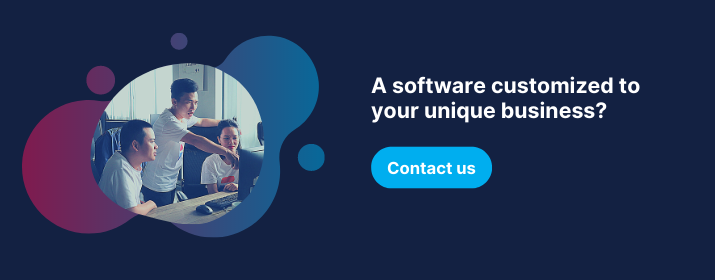In today's rapidly evolving digital landscape, secure coding practices are paramount to safeguarding applications from a myriad of security threats. As businesses increasingly rely on software to drive their operations, the necessity of embedding security within the application development lifecycle has never been more critical. This article explores the importance of secure coding, outlines common security threats, and delves into essential practices to protect your applications from vulnerabilities.
Importance of Secure Coding
Secure coding is the practice of writing software that is resistant to attacks and can protect against security vulnerabilities. This approach is essential because the cost of fixing security issues after deployment is significantly higher than addressing them during the development phase. According to a study by IBM, it costs six times more to fix a vulnerability in production than during implementation .
Moreover, data breaches and cyber-attacks can lead to severe financial and reputational damage. A report by the Ponemon Institute found that the average cost of a data breach in 2023 was $4.45 million, underscoring the financial impact of insecure software . Secure coding helps mitigate these risks by ensuring that applications are built with security at the forefront.
Common Security Threats
Several prevalent security threats can compromise applications if secure coding practices are not followed:
- SQL Injection: Attackers can manipulate queries to access or alter database information.
- Cross-Site Scripting (XSS): Malicious scripts can be injected into web pages, affecting users who view the page.
- Buffer Overflows: This can cause crashes or allow attackers to execute arbitrary code.
- Cross-Site Request Forgery (CSRF): Unauthorized commands are transmitted from a user that the web application trusts.
- Insecure Deserialization: Exploitation of data serialization and deserialization processes can lead to remote code execution.
These threats highlight the necessity of implementing robust secure coding practices throughout the development lifecycle.
Core Principles of Secure Coding
Fundamental Principles
Understanding and applying core security principles is the foundation of secure coding. These principles include:
- Least Privilege: Granting users and processes the minimum levels of access—or permissions—needed to perform their functions reduces the attack surface.
- Defense in Depth: Implementing multiple layers of security controls ensures that if one layer fails, others are in place to protect the system.
- Fail-Safe Defaults: Systems should default to a secure state in case of failure, ensuring that any errors do not expose vulnerabilities.
Security by Design
Security should be integrated from the very beginning of the software development lifecycle. This "security by design" approach involves considering security implications during the design phase and incorporating security requirements into all stages of development. By proactively addressing security, developers can identify and mitigate potential vulnerabilities before they become issues.
Input Validation and Sanitization
User Input Validation
Validating user input is crucial to prevent attackers from injecting malicious data into applications. Effective techniques include:
- Whitelisting: Allowing only known, safe input and rejecting anything that does not match the criteria.
- Regular Expressions: Using patterns to match and validate input formats.
- Length Checks: Ensuring that inputs are within expected length ranges to avoid buffer overflow attacks.
Sanitization Methods
Sanitizing input data further protects applications from injection attacks. Techniques include:
- Escaping Characters: Special characters in input data are escaped to prevent them from being interpreted as executable code.
- Blacklisting: Rejecting known dangerous inputs, though this method is less preferred than whitelisting due to the difficulty of maintaining an exhaustive list of all potential threats.
Authentication and Authorization
Strong Authentication
Implementing robust authentication mechanisms ensures that only legitimate users can access the application. Key practices include:
- Multi-Factor Authentication (MFA): Requiring multiple forms of verification, such as a password and a biometric factor, significantly enhances security.
- Password Policies: Enforcing strong password requirements and periodic changes to reduce the risk of compromised accounts.
Effective Authorization
Authorization ensures that authenticated users can only access resources they are permitted to use. Best practices include:
- Role-Based Access Control (RBAC): Assigning permissions based on user roles simplifies management and reduces errors.
- Least Privilege: Continuously applying the least privilege principle ensures users have only the access they need.
Data Encryption
Encryption Importance
Encryption is critical for protecting sensitive data both in transit and at rest. Encryption ensures that even if data is intercepted or accessed without authorization, it remains unintelligible.
Reliable Algorithms
Using strong encryption methods and key management practices is essential. Recommended algorithms include:
- AES (Advanced Encryption Standard): Widely adopted for its strength and efficiency.
- RSA (Rivest-Shamir-Adleman): Commonly used for secure data transmission.
- Key Management: Proper generation, storage, and rotation of encryption keys are vital to maintaining data security.
Secure Session Management
Session Handling
Proper session management is essential for maintaining security in web applications. Best practices include:
- Session Timeout: Automatically logging users out after a period of inactivity to reduce the risk of session hijacking.
- Session Invalidation: Ensuring that sessions are properly invalidated when users log out to prevent unauthorized reuse.
Token Protection
Protecting session tokens is crucial to prevent unauthorized access. Techniques include:
- Secure Cookies: Using secure attributes to ensure cookies are only transmitted over HTTPS.
Token Expiry: Implementing short-lived tokens that are refreshed regularly to minimize the risk of token theft.

Error Handling and Logging
Secure Error Handling
Proper error handling is essential to avoid revealing sensitive information that could aid attackers. Key practices include:
- Generic Error Messages: Display user-friendly, generic error messages to users, while logging detailed error information on the server side.
- Error Codes: Use standardized error codes to communicate issues without exposing system details.
- Input Validation: Ensure errors related to input validation do not reveal the nature of the validation checks.
Effective Logging
Logging security-relevant events is critical for detecting and responding to incidents. Best practices include:
- Comprehensive Logging: Log authentication attempts, access control failures, input validation errors, and other security-related events.
- Secure Log Storage: Protect log data from unauthorized access and tampering by encrypting logs and restricting access.
- Log Monitoring: Implement continuous log monitoring and alerting to detect suspicious activities in real-time.
Code Reviews and Automated Testing
Peer Code Reviews
Conducting peer code reviews helps identify security flaws early in the development process. Effective code review practices include:
- Standardized Checklists: Use checklists to ensure all critical security aspects are reviewed.
- Collaborative Reviews: Foster a collaborative environment where developers can discuss and address security concerns.
- Training: Regularly train developers on secure coding practices to enhance the effectiveness of code reviews.
Automated Security Testing
Automated tools can complement manual code reviews by identifying vulnerabilities that might be missed. Key tools and techniques include:
- Static Analysis: Tools like SonarQube and Checkmarx analyze source code for security issues without executing the code.
- Dynamic Analysis: Tools like OWASP ZAP and Burp Suite test running applications for vulnerabilities by simulating attacks.
- Continuous Integration (CI): Integrate automated security testing into your CI pipeline to ensure ongoing code quality and security.
Secure API Development and Third-Party Integrations
Designing Secure APIs
APIs are often targeted by attackers, making secure API design critical. Essential practices include:
- Input Validation: Validate and sanitize all inputs to APIs to prevent injection attacks.
- Authentication and Authorization: Use strong authentication mechanisms and enforce granular authorization checks for API endpoints.
- Rate Limiting: Implement rate limiting to prevent abuse and denial-of-service attacks.
Managing Third-Party Risks
Using third-party libraries and frameworks can introduce vulnerabilities if not properly managed. Best practices include:
- Dependency Management: Regularly update and patch third-party dependencies to fix known vulnerabilities.
- Security Assessments: Conduct security assessments of third-party components before integrating them into your application.
- Monitoring: Continuously monitor third-party components for newly discovered vulnerabilities and update accordingly.
Cloud and Mobile Security
Securing Cloud Applications
Cloud environments offer unique security challenges and opportunities. Key practices for securing cloud applications include:
- Shared Responsibility Model: Understand the division of security responsibilities between the cloud provider and your organization.
- Identity and Access Management (IAM): Use IAM policies to enforce the principle of least privilege and control access to cloud resources.
- Security Services: Utilize cloud provider security services, such as AWS Shield and Azure Security Center, to enhance your security posture.
Mobile Security Challenges
Mobile applications face distinct security threats due to their operating environments. Best practices for mobile security include:
- Secure Coding: Follow secure coding guidelines specific to mobile platforms, such as the OWASP Mobile Security Project.
- Data Protection: Encrypt sensitive data stored on the device and ensure secure communication channels.
- App Store Guidelines: Adhere to app store security guidelines and conduct thorough security testing before release.
Compliance, Training, and Future Trends
Regulatory Compliance
Adhering to industry-specific regulations is crucial for maintaining trust and avoiding legal repercussions. Key compliance practices include:
- Data Protection Regulations: Ensure compliance with regulations like GDPR, CCPA, and HIPAA, which govern data protection and privacy.
- Audit Trails: Maintain comprehensive audit trails to demonstrate compliance and facilitate investigations.
Developer Training and Awareness
Continuous security education is vital for fostering a security-first culture. Effective training practices include:
- Regular Workshops: Conduct workshops and training sessions to keep developers updated on the latest security threats and best practices.
- Security Champions: Designate security champions within development teams to advocate for secure coding practices and provide guidance.
Emerging Threats and Innovations
The cybersecurity landscape is constantly evolving. Staying ahead of emerging threats and adopting innovative practices is essential. Key trends include:
- Artificial Intelligence (AI): Leverage AI for threat detection and response to enhance security measures.
- Zero Trust Architecture: Implement a zero trust security model, which assumes that threats could be internal or external, and requires strict identity verification for every person and device.
- Quantum Computing: Prepare for the impact of quantum computing on encryption algorithms and develop strategies for quantum-resistant security.
Conclusion
Secure coding is an ongoing process that requires diligence and a proactive approach. By adhering to the practices discussed, including core security principles, input validation, robust authentication, data encryption, secure session management, and regular code reviews, you can significantly enhance the security of your applications.
Reference:
OWASP Secure Coding Practices-Quick Reference Guide - OWASP
Secure Software Development Framework - NIST
Secure Software Development and Code Analysis Tools - SANS
Cost of a Data Breach Report 2023 - IBM





